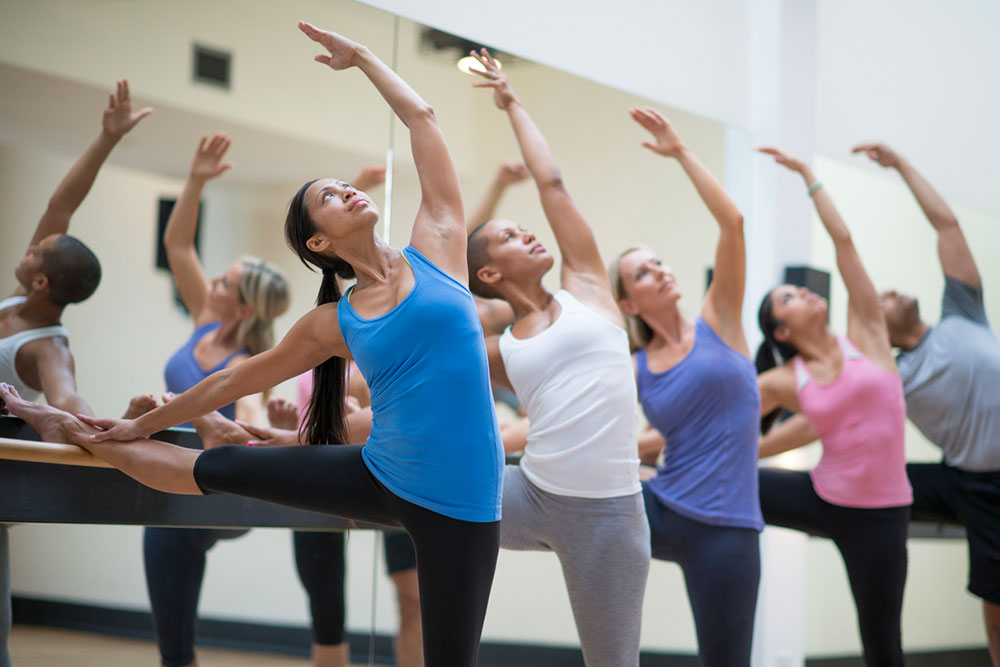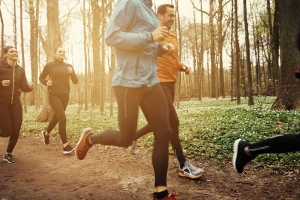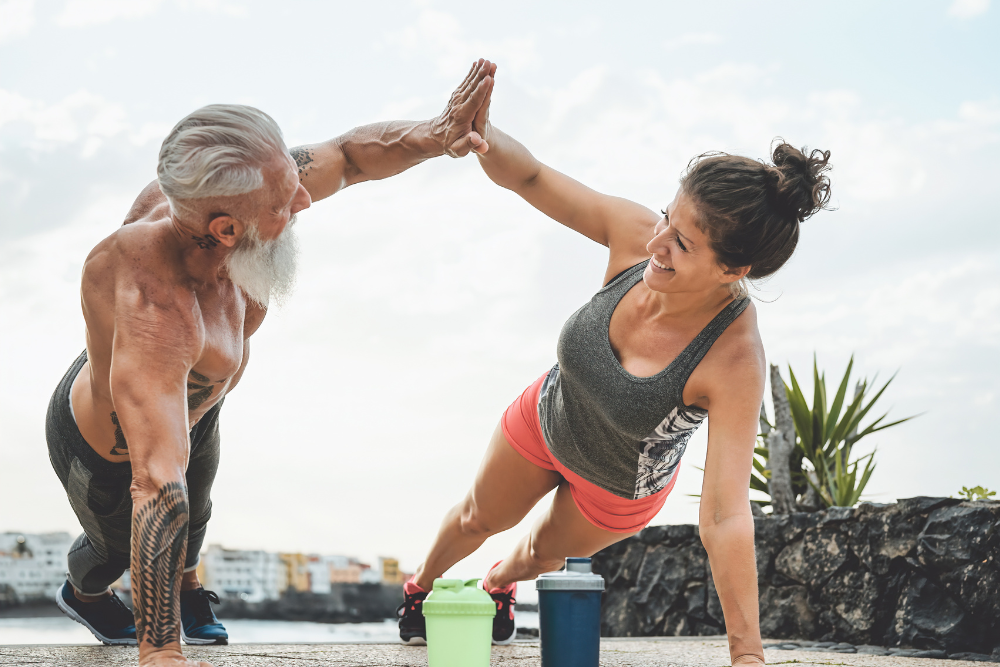Exercise and Digestive Health

Julia Basso – PhD
Dr. Shawn Khodadadian of Manhattan Gastroenterology writes that, “Exercise and digestion are mutually exclusive.” When you exercise, blood travels to your muscles and lungs (where it is needed) and away from the stomach and intestines. Therefore, digestion is slowed down during exercise. This is why eating a large meal, high in fiber, protein, and fat (things that are hard to break down) before you exercise is generally not a good idea.
Though exercise may lead to transient gastrointestinal issues such as nausea, heartburn, or diarrhea, exercise has many benefits for the gastrointestinal system.
The Benefits
 Physical activity has been shown to have an inverse relationship with many gastrointestinal related diseases such as colon cancer, diverticular disease, cholelithiasis or the formation of gallstones, and constipation (Martin, 2011). That is, the more you work out, the better your overall gastrointestinal health.
Physical activity has been shown to have an inverse relationship with many gastrointestinal related diseases such as colon cancer, diverticular disease, cholelithiasis or the formation of gallstones, and constipation (Martin, 2011). That is, the more you work out, the better your overall gastrointestinal health.
Colon Cancer
Dr. Donald Martin says that, “The evidence is overwhelming that physical activity reduces the risk of [this disease]” (Martin, 2011). Studies with large numbers of individuals (~400,000) show that a dose-response relationship exists between physical activity levels and risk of colon cancer. Longer periods of more vigorous-intensity exercise confer the largest benefits, with up to a 25% decrease in the risk of colon cancer. Preliminary evidence exists showing that this may be the case for gastric and pancreatic cancers as well. This may be because physical activity reduces “intestinal transit time” or the amount of time that food and its waste products travel through the stomach and intestines. In effect, this limits the amount of contact time between the lining of the stomach and intestines with carcinogens, or cancer causing agents.
GERD
The relationship between exercise and gastroesophogael reflux disease (GERD) is more controversial. The lower esophageal sphincter (LES) is a muscle that normally opens to allow food to pass from the esophagus to the stomach and then closes to prevent food and stomach acids from reentering the esophagus. In patients with GERD, this muscle is weak, allowing the contents of the stomach to enter the esophagus. This produces the painful sensation known as heart burn.
GERD is a common condition. Approximately 60% of the American population will experience GERD symptoms this year, with 20-30% of the populations experiencing symptoms weekly. Though vigorous exercise may induce GERD and athletes often report symptoms of this disorder, research shows that chronic exercise decreases your risk of GERD. For example, in a study including a total of 7,124 participants, a correlation exists between the number of exercise sessions lasting at least 30 minutes and a decreased risk of GERD symptoms (Nocon et al., 2006).
Additionally, a study in identical twins showed that the twin who experiences GERD symptoms tend to be less physically active in their leisure time than the other twin who was symptom free (Zheng et al., 2007). Scientists speculate that exercise may be helping to improve the strength of the muscles in the area between the esophagus and stomach, thus preventing reflux.
Constipation
Exercise has also been shown to help with constipation. As many of us know, constipation is a problem where bowel movements are infrequent and/or difficult to pass. Constipation can be caused from changes in diet, medication, or hormones. In the adult American population, rates of constipation range from 2-30%, but can be much higher in the elderly (50-75%). Enhancing physical activity in patients with constipation improves defecation patterns and decreases the need for laxatives.
Underlying reasons for these improvements include:
- Increased motility of the colon
- Biomechanical vibration of the gut during exercise
- Compression of the abdomen during muscular contraction (like sit ups)
- Increased fiber intake as a result of greater energy expenditure.
Some reports have also indicate that exercise may protect against peptic ulcer disease, non-alcoholic fatty liver disease, cholelithiasis or the formation of gallstones, gastrointestinal bleeding, inflammatory bowel disease, diverticular disease, and irritable bowel syndrome, though the evidence is less convincing.
Finally, strong evidence exists showing that exercise changes the number and content of the gut microbiota (or the bacteria that live in our gut) in positive ways.
Related Article: Exercise Your Gut
Takeaway
Exercise is clearly doing good things for our digestive systems. Though an intense bout of exercise may spur an upset stomach from time to time, exercising is certainly healthy for our digestive systems in the long run.
References:
Martin, D. (2011). Physical activity benefits and risks on the gastrointestinal system. Southern medical journal, 104(12), 831-837.
Nocon, M., Labenz, J., & Willich, S. N. (2006). Lifestyle factors and symptoms of gastro‐oesophageal reflux–a population‐based study. Alimentary pharmacology & therapeutics, 23(1), 169-174.
Zheng, Z., Nordenstedt, H., Pedersen, N. L., Lagergren, J., & Ye, W. (2007). Lifestyle factors and risk for symptomatic gastroesophageal reflux in monozygotic twins. Gastroenterology, 132(1), 87-95.
(adsbygoogle = window.adsbygoogle || []).push({});
You Might Like:
Walking After Eating: An Effective Way to Manage Blood Sugar
Over the last few years, Type II diabetes has become one of the biggest health concerns on the planet. Typified by an inability to correctly manage your blood sugar levels, it can have deleterious health...What Is the Hype About Antinutrients and Are They Harmful?
Ask and they will agree that fruits and vegetables are some of the healthiest foods on the planet – and for the most part, they would be right. They are full of vitamins and minerals,...The World’s Most Powerful Antioxidant: Glutathione
Over the last couple of years Glutathione has made a bit of splash in the supplement industry, where it has been touted as one of the most powerful products to hit the market in years....BCAAs (branched-chain amino acids): What You Need to Know
There are thousands of different supplements available for your consumption – all of which promise the world (many of which, unfortunately, fail to deliver on that promise). One supplement that has become a mainstay in...Intermittent Fasting and Running
Intermittent fasting has quickly become one of the most popular dietary strategies of the decade. Over the last few years, it has evolved from a niche topic into something that everyone is doing. And with...3 Vitamins to Boost Your Immune System Now
Given the impact that coronavirus is having on our society, I thought it would be a great time to provide some useful information that can have a positive effect on your immune system. And no,...(adsbygoogle = window.adsbygoogle || []).push({});














